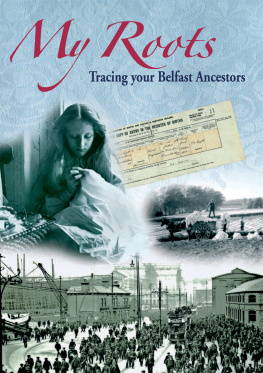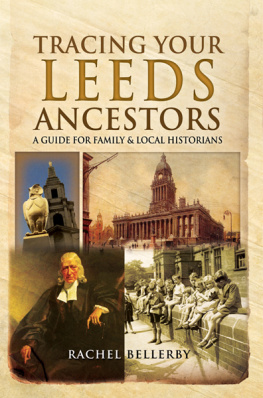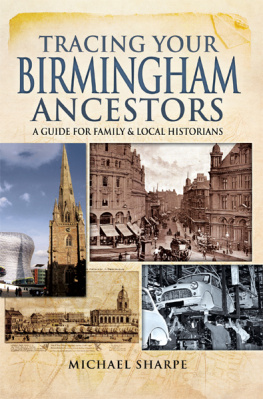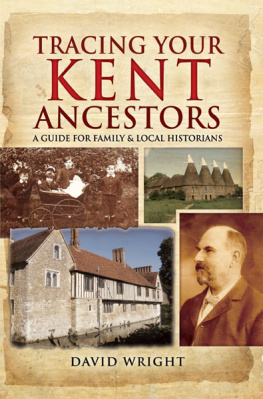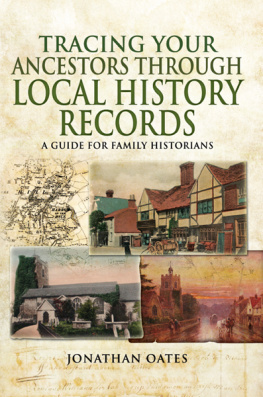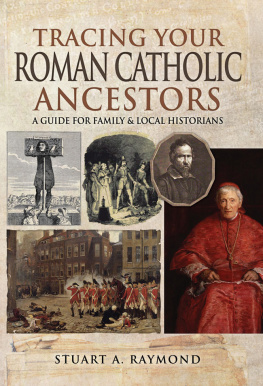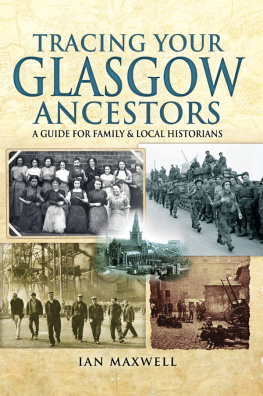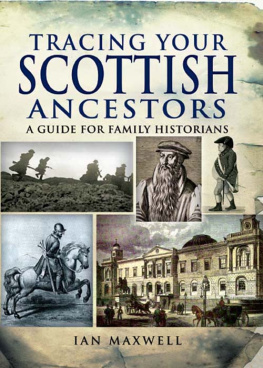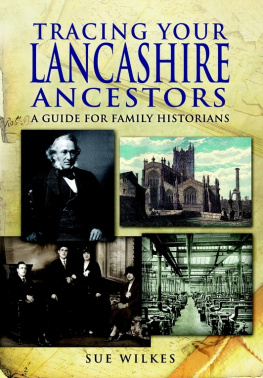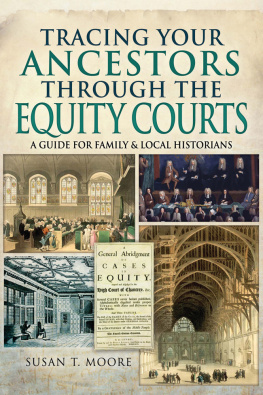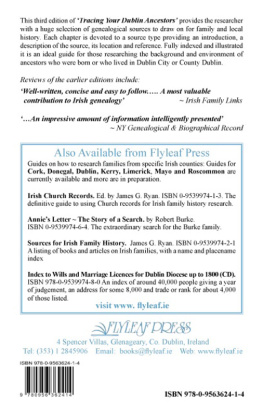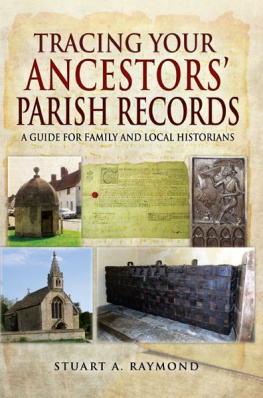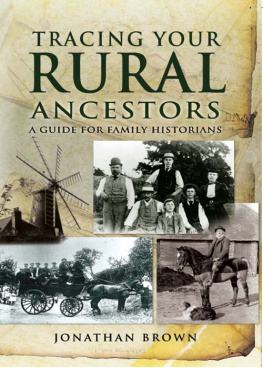William Roulsten - My Roots: Tracing your Belfast Ancestors
Here you can read online William Roulsten - My Roots: Tracing your Belfast Ancestors full text of the book (entire story) in english for free. Download pdf and epub, get meaning, cover and reviews about this ebook. year: 2012, publisher: Ulster Historical Foundation, genre: Religion. Description of the work, (preface) as well as reviews are available. Best literature library LitArk.com created for fans of good reading and offers a wide selection of genres:
Romance novel
Science fiction
Adventure
Detective
Science
History
Home and family
Prose
Art
Politics
Computer
Non-fiction
Religion
Business
Children
Humor
Choose a favorite category and find really read worthwhile books. Enjoy immersion in the world of imagination, feel the emotions of the characters or learn something new for yourself, make an fascinating discovery.
- Book:My Roots: Tracing your Belfast Ancestors
- Author:
- Publisher:Ulster Historical Foundation
- Genre:
- Year:2012
- Rating:3 / 5
- Favourites:Add to favourites
- Your mark:
- 60
- 1
- 2
- 3
- 4
- 5
My Roots: Tracing your Belfast Ancestors: summary, description and annotation
We offer to read an annotation, description, summary or preface (depends on what the author of the book "My Roots: Tracing your Belfast Ancestors" wrote himself). If you haven't found the necessary information about the book — write in the comments, we will try to find it.
This booklet is designed to be an introduction to the sources available for researching Belfast ancestors and where they can be found. It is aimed at those starting out in their quest to find out more about their local family history and the history of their local community.
My Roots: Tracing your Belfast Ancestors — read online for free the complete book (whole text) full work
Below is the text of the book, divided by pages. System saving the place of the last page read, allows you to conveniently read the book "My Roots: Tracing your Belfast Ancestors" online for free, without having to search again every time where you left off. Put a bookmark, and you can go to the page where you finished reading at any time.
Font size:
Interval:
Bookmark:

Published 2007, updated 2008
by the Ulster Historical Foundation
49 Malone Road, Belfast BT9 6RY
www.ancestryireland.com
Except as otherwise permitted under the Copyright, Designs and Patents Act 1988, this publication may only be reproduced, stored or transmitted in any form or by any means with the prior permission in writing of the publisher or, in the case of reprographic reproduction, in accordance with the terms of a licence issued by The Copyright Licensing Agency. Enquiries concerning reproduction outside those terms should be sent to the publisher.

Epub ISBN: 978-1-908448-39-2
Mobi ISBN: 978-1-908448-38-5
Printed by Thomson Litho
Typeset by December Publications & FPM Publishing
Design by Dunbar Design

Map of Belfast by Thomas Larcom, 1837 (British Parliamentary Papers)
| CI | Church of Ireland |
| DED | District Electoral Division |
| GRO | General Register Office |
| LC | Local Custody |
| M | Methodist |
| NAI | National Archives of Ireland |
| NLI | National Library of Ireland |
| P | Presbyterian |
| PRONI | Public Record Office of Northern Ireland |
| RC | Roman Catholic |
| UHF | Ulster Historical Foundation |
All references, unless otherwise stated, are for documents held by PRONI.
Barony. A unit used in Ireland between the sixteenth and nineteenth centuries for administrative (census, taxation, and legal) purposes. Often drawn on pre-existing Gaelic divisions, baronies consisted of large groupings of townlands within a county. The 1891 census is the last to use the barony as an administrative unit.
County. The county system as a form of territorial division was introduced into Ireland shortlyafter the Norman Conquest in the late twelfth century. The creation of counties or shires was gradual, however, and the present arrangement of county boundaries was not finalised in Ulster until the early seventeenth century. In 1898 local councils based on county divisions were created. County councils remain the principal administrative body of local government in the Republic of Ireland but were abolished in Northern Ireland in 1973. The counties in Ulster are: Antrim, Armagh, Cavan, Donegal, Down, Fermanagh, Londonderry, Monaghan and Tyrone. Of these, Cavan, Donegal and Monaghan are in the Republic of Ireland, with the rest in Northern Ireland.
Diocese. A diocese is an area controlled by a bishop and composed of a group of parishes. The number of parishes in a diocese varies considerably. In the diocese of Connor, there were over seventy parishes, while in the diocese of Clogher there were approximately thirty-five parishes. The network of dioceses was created in the medieval period and continues to be used by both the Church of Ireland and Roman Catholic Church with only minor alterations. The dioceses in Ulster are Armagh (covering all or part of counties Armagh, Londonderry and Tyrone), Clogher (Donegal, Fermanagh, Monaghan and Tyrone), Connor (Antrim, Down and Londonderry), Derry (Donegal, Londonderry and Tyrone), Down (Down), Dromore (Antrim, Armagh and Down), Kilmore (Cavan and Fermanagh) and Raphoe (Donegal).

Belfast in 1791, population 18,320. Reprinted from Merchants in Plenty
Manor. The manor was introduced to Ireland by the Normans in the twelfth century. In the early seventeenth century grantees in the Ulster Plantation were given power to create manors. The manor provided the basic legal framework within which an estate could be managed and was vital to its successful development. The lord of the manor was enabled to hold courts leet and baron to regulate the affairs of his estate. The manor courts also provided an arena where tenants could settle their disputes.
Parish. This territorial division refers to both civil and ecclesiastical units. Civil parishes largely follow the pattern that was established in medieval times. Ecclesiastical parishes do not always coincide with civil parish boundaries, however. Following the Reformation in the sixteenth century, the Church of Ireland more or less maintained the pre-Reformation arrangement. Church of Ireland parishes are, therefore, largely coterminous with civil parishes. When the Catholic Church began its institutional re-emergence in the late eighteenth and nineteenth centuries, it constructed a new network of parishes which did not follow the civil parish network. The County Antrim part of Belfast is mainly in the parish of Shankill. That part of Belfast in County Down is mainly in the parish of Knockbreda.
Province. Provinces are composed of groups of counties. There are four provinces in Ireland: Ulster in the north, Leinster in the east, Munster in the south, and Connacht or Connaught in the west.
Townland. This is the smallest administrative territorial unit in Ireland, varying in size from a single acre to over 7,000 acres. Originating in the older Gaelic dispensation, townlands were used as the basis of leases in the estate system, and subsequently to assess valuations and tithes in the eighteenth and nineteenth centuries. They survive as important markers of local identity.

Extract from Samuel Lewis, Atlas of Ireland (1837)
This booklet is designed to be an introduction to the sources available for researching Belfast ancestors and is aimed at those starting out in their quest to find more about their family history. It considers the main categories of record, where they may be found and how they can be used to assist you with your research. It is designed to be a handy guide to have with you when you visit the different archives and libraries in the course of your research. A much more comprehensive volume on researching Belfast ancestors will be published by Ulster Historical Foundation in due course.
The best way for someone to begin researching the history of their family is within their own family circle. In nearly every family there is at least one member with an encyclopaedic knowledge of who married who and how many children they had and where they lived etc. Collect as much information as possible on names, dates and places relating to your family; write it down and begin to plot out the skeleton of a family tree. A family Bible is another possible source of information on your ancestors. Gathering this information before you visit the archives can save a great deal of time. Once you find out what you do know, you will then be aware of the gaps and will have a clearer idea of what you should be looking for.
Civil registers of births, marriages and deaths provide basic family history information. However, their usefulness for the genealogist will depend on the period being researched. Civil or state registration of all births, deaths and marriages began in Ireland on 1 January 1864. Non-Catholic marriages, including those conducted in a government registry office, were required in law to be registered from 1 April 1845. Civil registration followed the administrative divisions created by the Poor Law Act of 1838. The country was divided into Poor Law Unions. The Poor Law Unions were subdivided into dispensary districts, each with its own medical officer. Under civil registration the area covered by a Poor Law Union was used as the basis of each superintendent registrars district, while the dispensary districts corresponded to the registrars districts. In some cases the medical officer also served as the registrar. In overall charge of registration was the Registrar General in Dublin. Certified copies of all registers compiled locally were sent to his office and, from these, indexes covering the whole of Ireland were produced.
Font size:
Interval:
Bookmark:
Similar books «My Roots: Tracing your Belfast Ancestors»
Look at similar books to My Roots: Tracing your Belfast Ancestors. We have selected literature similar in name and meaning in the hope of providing readers with more options to find new, interesting, not yet read works.
Discussion, reviews of the book My Roots: Tracing your Belfast Ancestors and just readers' own opinions. Leave your comments, write what you think about the work, its meaning or the main characters. Specify what exactly you liked and what you didn't like, and why you think so.

